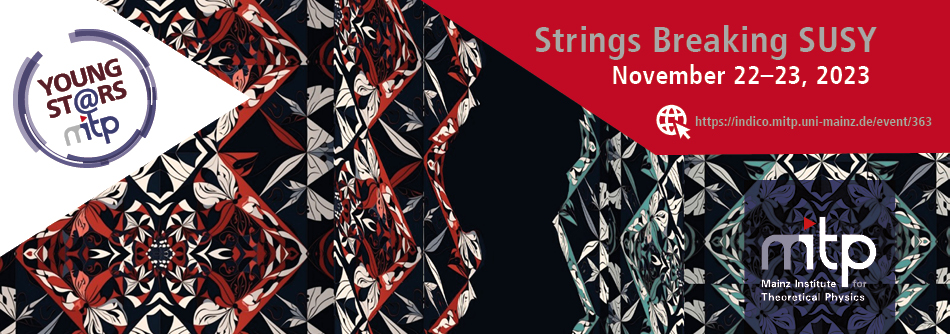The purpose of the present workshop is to review the current state of Supersymmetry (SUSY) breaking in String Theory. The way in which SUSY breaking takes place has drastic implications for the hierarchy problem, the cosmological constant problem, and the broader understanding of String Theory in relation to our universe. In this sense, it is natural to seek connections with the Swampland Program.
In fact, despite remarkable progress, String Theory remains hardly accessible outside of ideal settings protected by SUSY. Understanding SUSY breaking mechanisms is of great importance for connecting String Theory to the real world. So far, there are currently no constructions under complete control for low-energy SUSY breaking. Naive dimensional analysis suggests that SUSY should be naturally broken at high energies: this suggests that SUSY breaking may occur in an intrinsically stringy manner rather than through a purely field-theoretical realization. However, the latter also remains a valuable option.
The workshop aims to address the central question of whether and to which extent the understanding of SUSY breaking can guide new progress in String Theory. Existing constructions in the literature face control issues and instabilities upon SUSY breaking. Conjectures propose that achieving stable dS vacua within a consistent low-energy field theory may be impossible due to bounds on the scalar potential and its derivatives. However, the speculative nature of these conjectures leaves the problem open for further investigation. The Swampland Program aims to elucidate this interconnected network, but most tests have been performed in setups with a high amount of SUSY, potentially leading to a "lamppost" effect where general lessons are drawn from special cases. Thus, the workshop aims to bring attention to these issues and stimulate research on Swampland conjectures in setups that do not rely on SUSY.
The workshop expects to bring together a community of experts, foster discussions and interactions, review the current state of the field, and propose novel directions for research.

